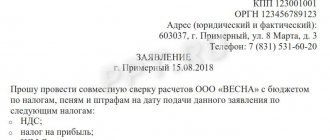A special assessment of working conditions is one of the fundamental responsibilities of the employer. This is a tool for ensuring safety and comfort for personnel, determining guarantees and compensation for harmful working conditions, which are provided for by the Labor Code of the Russian Federation.
SOUT is a single set of consistently implemented measures to identify harmful and (or) dangerous factors in the working environment and the labor process, assessing the level of their impact on the employee, taking into account the deviation of actual values from established standards. The company conducts a special assessment every five years (unless otherwise provided by law) together with an expert organization that is in the Register of organizations conducting special assessments. The results of a special assessment of the workplace determine whether the employee is entitled to increased wages, additional days of vacation, other guarantees and compensation. As well as deductible contributions for the employee to the Pension Fund of the Russian Federation.
Similar Jobs: Identification and Assessment
According to Part 6 of Article 9 of the Federal Law of December 28, 2013 &8470; 426-FZ for similar workplaces, the following characteristics are identified: “located in one or more of the same type of production premises (production areas), equipped with the same (same type) ventilation, air conditioning, heating and lighting systems, where employees work in the same profession, positions, specialties, perform the same labor functions in the same working hours while conducting the same type of technological process using the same production equipment, tools, devices, materials and raw materials and are provided with the same personal protective equipment.”
One of the first steps in a special assessment is preparing a list of jobs and identifying similar ones. Having correctly determined the number of similar jobs, the company reduces the costs of carrying out SOUT by up to 80%. When similar jobs are identified, a special assessment is carried out only in relation to 20% of the total number of such places (but not less than two). Its results are applied to all similar jobs. One SOUT card is also filled out for them, and a unified list of measures aimed at improving working conditions is developed.
Special assessment of working conditions of similar workplaces
Before conducting a special assessment of working conditions, the employer needs to draw up a list of jobs that will be assessed. This way you can find out the approximate cost of this procedure. But in most cases, the calculations turn out to be incorrect because similar jobs are incorrectly identified. Let's figure out how to avoid common mistakes.
How many jobs can be classified as similar?
Workplaces that are considered similar are those (Clause 6, Article 9 of Federal Law No. 426-FZ of December 28, 2013 “On Special Assessment of Working Conditions”): - located in one or more similar premises (zones); — equipped with the same ventilation, air conditioning, heating and lighting systems;
For example, the jobs of an accountant and a chief accountant sitting in the same office are not similar. This is because they have different job titles. The employer’s desire to classify as many jobs as possible as similar is understandable. This reduces the costs of special assessments: one special assessment card for working conditions is filled out for similar jobs and a general list of measures to improve working conditions is drawn up for them.
Example A company has five call center operators. They all work in the same office and have the same responsibilities. That is, we are talking about similar jobs. It would seem that 20 percent of their total number needs to be assessed - one workplace. But it was not there. The law on special assessment requires the procedure to be carried out at at least two workplaces.
Therefore, we include two call center operators in the list of jobs for special assessment. If an organization, for example, has two similar managerial jobs, then both will still have to be assessed. This is necessary to obtain an objective result during instrumental studies. If at least one measured parameter does not match, 100 percent of the jobs will be assessed.
Regardless of the size of the employee’s rate, his workplace will be equivalent to one in a special assessment of working conditions. That is: part-time employment - one job, 0.3 wages - one job, 2.15 wages - two jobs.
Why workplaces with the same equipment are not always similar
The same equipment in the workplace does not always indicate the same production process.
Example An accountant, a leading accountant, a chief accountant and a HR specialist work in an office. Everyone has exactly the same computers. However, these jobs are not similar. Firstly, employees have different positions. Secondly, the equipment in the workplace must be absolutely identical: make, model, and year of manufacture. A similar example can be given for driver jobs.
Example An organization has five drivers. Ivanov works on a 2010 Renault car, Sidorov on a 2009 Ford car, Petrov, Stakhanov and Pavlov on a 2013 Ford car. Often employers classify all such jobs as similar. This is incorrect, since only the jobs of Petrov, Stakhanov and Pavlov will be similar.
When jobs for the same positions cannot be considered similar
Sometimes jobs that contain workers with the same job titles are still not similar. An organization may have five department heads on staff, but this does not mean that they have the same functions. In such situations, it is necessary to clarify which department the employee is in charge of.
Example In production there are 14 operators of a drug bottling line. They work in two shifts. Three jobs were presented for special assessment. In this case, the employer incorrectly approached the definition of similar jobs. Seven people work in one shift. That is, taking into account the analogy, two jobs need to be assessed.
We suggest you read: Replacement of rights after marriage
Provided that seven people working the second shift come to the same jobs and perform the same functions. Thus, if you are not sure that you have taken into account all the features and correctly identified similar jobs, then it is better to seek help from an organization that will conduct a special assessment.
Answers to your questions
How can employees justify a change in the class of working conditions? An educational institution carried out a special assessment of labor conditions. They removed the 3.1 hazard class from the cleaners, which caused them great indignation. How to explain to female employees the legality of changing the class of their working conditions from 3.1 to 2?
It is necessary to familiarize staff with the results of the special assessment against signature. If you wish, you can also familiarize them with regulatory documents confirming the legality of your actions. If the special assessment confirms that working conditions have improved, you have the right to cancel the compensation that the cleaners received before (part four of Article 219 of the Labor Code of the Russian Federation).
Is it necessary to pay additional insurance premiums if, based on the results of a special assessment, harmful working conditions are established? The organization conducted a special assessment. For many positions (accountant, head of the human resources department, etc.) a hazard class of 3.1 was established. Do I need to pay additional contributions to the Pension Fund or is it enough to eliminate lighting violations?
If workplaces have a class of working conditions of 3.1, then they must pay insurance premiums at an additional rate of two percent (Clause 2.1, Article 58.3 of the Federal Law of July 24, 2009 No. 212-FZ “On Insurance Contributions to the Pension Fund of the Russian Federation , Social Insurance Fund of the Russian Federation, Federal Compulsory Medical Insurance Fund and territorial compulsory medical insurance funds").
Is it possible to determine the impact of humidity and mold on workers? Our company has an underground museum of mining, geology and speleology located in the exhaust workings of an active mine. There is naturally high humidity and mold. The workplaces of the guide and accompanying person are subject to special assessment, but the Classifier of harmful and (or) hazardous production factors does not include humidity and mold.
Is it possible to assess their harmfulness to museum workers? Is it legal to do this outside of a special assessment? You can invite an independent expert organization to measure the level of humidity and the nature of the mold. If research confirms that these factors can indeed negatively affect workers, then there will be a compelling reason to issue staff with PPE and special clothing, as well as send them for a medical examination.
Remember the main thing: 1 Workplaces located in the same room (premises of the same type) and occupied by employees with the same positions and job functions are considered similar. 2 20 percent of similar jobs, but not less than two, are subject to special assessment. 3 In order for workplaces to be considered similar, they must have the same equipment, down to the year of manufacture. 4 When working in shifts, it is permissible to conduct a special assessment only of workers of one shift.
Under special working conditions, similar jobs play a very important role. Their presence at the enterprise makes it possible to carry out a special assessment of working conditions (hereinafter referred to as SOUT) in smaller volumes, which means saving time and material resources of the company. Let's consider which jobs can be considered similar and how to avoid mistakes when defining them.
03.10.2017 9:46:00
Conducting a special assessment of working conditions (SOUT) begins with preparing a list of jobs to be assessed. This allows the employer to know the preliminary cost of the procedure. But due to misidentification of similar jobs, price calculations often end up being wrong.
HOW TO COUNT JOBS FOR SOUTH WITHOUT ERROR?
Federal Law No. 426-FZ defines signs of similarity, according to which workplaces are considered similar: those located in one or several monotype premises (work areas); equipped with monotype engineering systems (lighting, heating, ventilation); occupied by workers of the same profession, performing the same job duties in the same working mode, using the same devices and tools, raw materials and materials, provided with the same PPE.
For example, the jobs of an accountant and a chief accountant will not be considered similar. Because, despite the fact that they work in a single workspace, their positions are called differently. The desire of employers to classify as many jobs as possible as similar is explained by the desire to minimize time and financial resources for carrying out SOUT.
After all, only 20% of the total number of similar jobs (but not less than two) are necessarily assessed, for which a general SOUT map is drawn up and a unified list of actions to improve working conditions is prepared. For example, the staff of a call center includes five operators performing the same job duties in the same room.
Of course, these are similar jobs. Since 20% of the total number is estimated, one workplace is subject to SOUT. But no, the law obliges to evaluate at least two jobs. Therefore, two jobs for the position “operator” must be included in the list for the SOUT. If an enterprise has two similar engineer jobs, they are both subject to a special assessment, which is required to ensure that the most objective results are obtained during instrumental measurements.
Example:
At the Uslada factory in the workshop &8470; 1 employs 20 drivers. All jobs are similar. That is, a special assessment of research (testing) and measurements are carried out in relation to 20%, i.e. at 5 similar places. If, based on the results of a special assessment, a harmful and (or) dangerous class of working conditions is established at these workplaces, then the corresponding class (subclass) of working conditions is established at all workplaces. For each worker, appropriate guarantees and compensation are assigned, and a list of measures to improve working conditions is developed. For all similar jobs, one special assessment card of working conditions will be filled out.
Similar jobs with special assessment
Before ordering SOUT services, the employer estimates how much this procedure will cost him. Often, the employer's calculations turn out to be incorrect because the following points are not taken into account.
Situation 1. The workstations of the accountant and the chief accountant are located in the same office, which means they work under the same conditions in terms of air temperature, lighting, etc. The work activity of these workers is equally related to working on a computer. And yet, these jobs cannot be considered similar, since these workers have different positions, and therefore different job functions.
Situation 2. The technical support service has 10 people working in one room. They have the same position - support operator, the same job functions. They all use computers and telephone equipment. In order for these jobs to be recognized as similar, workers must use exactly the same equipment: the same brand, same year of production, with the same technical characteristics, etc.
We suggest you read: If you get into an accident with your work car, you need to compensate for the damage caused
Situation 3. The legal department has 5 lawyers. According to legal requirements, twenty percent of similar jobs are subject to special assessment. Using simple calculations, it turns out that SOUT can be carried out in relation to one workplace out of five. However, this calculation does not take into account another rule - a special assessment is carried out in relation to at least two jobs from the category of similar ones.
- When calculating 20% of jobs to be assessed, the employer does not take into account that at least two jobs must be assessed for each group. Thus, in all cases where there are ten or fewer similar jobs in a group, two of them should be evaluated (even if there are only two).
- The employer does not take into account that jobs must meet all of the “similarity” criteria listed above, and not some of them.
The heads of the supply department and the sales department work in offices of the same size, with one common heating and air conditioning system, and use the same office equipment. But these jobs cannot be considered similar, because Heads of different departments perform different job functions.
Truck drivers work on the same schedule and transport the same type of cargo. The driver's workplace is the car cabin. In this case, only the jobs of those drivers who are allocated cars of the same make and year of manufacture can be considered similar.
Technical support specialists work in one common room in an open space format, performing the same functions - advising the company’s clients. But in order for their jobs to be considered similar, they must still use the same office equipment. In particular, telephone sets must be of the same manufacturer, year of manufacture and with similar technical characteristics.
Errors in identifying groups of similar jobs can lead to the fact that instead of saving time and resources, the enterprise incurs additional costs. Clause 5 of Art. 16 of Law No. 426-FZ provides that if a discrepancy with the criteria of similarity is identified for at least one workplace, a special assessment will need to be carried out for all workplaces from this group that were previously recognized as similar.
Therefore, it is advisable to use the services of a specialized organization already at the stage of selecting jobs for SOUT. This will help you plan your work optimally and minimize the likelihood of errors.
When selecting similar workplaces for carrying out SOUT, it is important to correctly evaluate all the criteria that allow combining workplaces into a group. To avoid mistakes, it is best to contact a specialized organization at this stage.
Similar workplaces are considered to be workplaces that are located in one or more identical production premises, equipped with the same type of equipment, tools, ventilation systems, heating, air conditioning, and lighting. A prerequisite is that employees belong to the same profession, specialty, position and perform the same job duties.
Do you think it is possible to classify, for example, the workplace of an accountant and a leading accountant, located in the office opposite each other, as similar? True, this cannot be done. Even if workers perform the same functions and are in the same work area, but they have different positions, then there can be no question of analogy.
Mistake #1. Let's start with calculations using the formula. The staff consists of 5 employees, all of them are located in the same office and perform the same job responsibilities. In all respects they can be classified as similar. Many specialists automatically calculate using the formula - 20% out of 5, receive a “1” and, accordingly, declare only one employee for the SOUT.
Correct option: In this case, the specialist loses sight of the legal requirement that at least 2 jobs are subject to assessment. Even if you have only two jobs, for example, “manager”, which meet the principles of similarity, both jobs will be subject to SOUT.
The established minimum for workplaces was determined so that during instrumental research an objective result of the work was obtained. If at least one of the measured parameters at two workplaces differs, all 100 percent of workplaces will be assessed.
Important: if for an employee the occupied rate is equal to one or less than one, then with SOUT this is equivalent to one workplace. That is, 0.5 rates = 1 job; 0.2 rates = 1 workplace; 2.25 rates = 2 jobs (in this example, three jobs are implied, but according to the rule of analogy, two jobs will be subject to SOUT), etc.
Mistake #2. An office office in which such categories of employees as accountant, chief accountant, leading accountant, HR engineer are represented. Each of them has a PC on their desktop. A number of specialists are trying to equate them to each other due to the fact that they are in the same office with the same conditions and perform work on a PC.
We suggest you read: How to challenge and terminate a guarantee agreement for a bank loan || Termination of a guarantee agreement by agreement of the parties
Correct option: the presence of identical equipment does not mean that workers perform the same technological process. Equipment will be taken into account only if the positions of the workers are the same. In this case, the brand and year of manufacture of the equipment must be identical. In this case, the sign of analogy is not acceptable.
The legislation contains a definition of a special assessment of working conditions of similar workplaces. This is part 6 of Art. 9 of the relevant Law of December 28, 2013 No. 426-FZ.
As a result, a special assessment of the working conditions of similar workplaces is when, at the stage of preparation for the special assessment, they can be classified according to similar characteristics: each formed category of objects will consist of similar places of work for hired personnel.
Law No. 426-FZ identifies a list of criteria by which jobs are combined into a group of similar ones. It is when:
- workplaces are located at one production facility, in one or several premises of the same type;
- working conditions are identical or almost identical;
- personnel, when performing their work functions, use the same type of equipment; air conditioning, ventilation, heating and lighting systems have similar characteristics;
- specialists with the same job descriptions work in similar workplaces, their qualification levels, positions, and professional skills coincide;
- the work process at different objects that are supposed to be combined proceeds in the same way;
- When performing tasks, hired personnel use tools and protective equipment with the same technical characteristics.
As explained in the explanations about the special assessment of working conditions at similar workplaces, if no similarities are identified across the entire set of characteristics, places of work cannot be combined for the purposes of the special assessment. That is, only the continuous method is suitable.
Responsibility for identifying jobs of the same type and dividing them into groups rests with the commission for preparation for SOUT. This collegial body is created by the head of the enterprise. One of the functions of the commission is to compile a complete list of jobs that the company has, collecting information about vacant positions and other excluded jobs.
If there are many similar places in the enterprise, you need to focus on the minimum coverage limit for checking workplaces. The assessment must be carried out on 20% of the jobs found to be the same. In absolute terms, the minimum coverage threshold is set to 2 work objects.
Based on the results of a special assessment of the working conditions of similar workplaces, the management order consolidates the overall picture - the SOUT map. The same recommendations are made for all combined facilities to improve the level of safety and work comfort.
At the preliminary stage, the employer draws up an approximate cost estimate for the special assessment. When calculating the necessary financial investments in this event, all enterprises strive to save money. This, of course, is possible if similar jobs are combined: a special assessment of working conditions will then be carried out in relation to a smaller number of objects (by reducing the amount of work of experts, the cost of their services is reduced).
| Error | Example | Explanation |
| When combining into one group, the factor of different names of regular positions and the presence of differences in job functions was not taken into account | The accounting department occupies one office. There are several accountants and a chief accountant with a cashier in the room. The employer classified all financial personnel into one category. | This is the wrong approach - only accountants with similar functional responsibilities can be united. But the cashier and chief accountant have a different set of job responsibilities from all other positions. As a result, in this example there are 3 groups of jobs. |
| The identity factor of the equipment being used is not taken into account | The customer technical support service consists only of operators. They all work in the same room, their job responsibilities and job titles are the same. The employer combined them into one group to conduct a special assessment. | This step will be justified under one condition - the entire set of equipment and tools used by such employees of the department has identical characteristics, the dates of manufacture of these technical equipment and the brands of manufacturers coincide. |
| The inspection limit has been violated - similar workplaces should be subject to a special assessment of working conditions in the amount of 20%, but not less than 2 staff units | There are 5 cutters working in one workshop. They meet all identity criteria for grouping similar jobs. The 20% verification threshold is calculated: it is equal to 1 unit (5 × 20%). The employer includes one position in the appraisal plan. | This is the wrong decision - if 20% of positions within one group cover less than 2 staff positions, a special assessment is carried out for at least two jobs |
Common mistakes
The legislation does not regulate how many places can be recognized as similar. During the special assessment process, employers strive to classify as many places as possible as such, since this reduces the costs of special assessment, but leads to errors.
If during the special assessment, at least one of the workplaces previously recognized as similar is identified, which does not correspond to the characteristics of similarity, then a special assessment is carried out at all workplaces previously classified as similar. This will lead to increased costs for conducting a special assessment.
Example:
At the Uslada factory in the workshop &8470; 2 employees of the same qualifications work in the same premises with similar working conditions at workplaces. Both received higher technical education and have more than 6 years of specialized work experience. Their job responsibilities: establish the operational route for processing and assembling products, draw up plans for the placement of equipment and technical equipment. However, the positions of the employees are different - leading engineer and leading process engineer. Based on the assessment results, these jobs cannot be considered similar.





